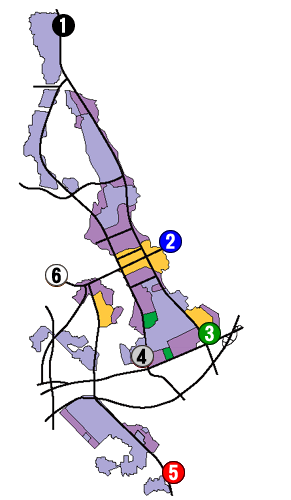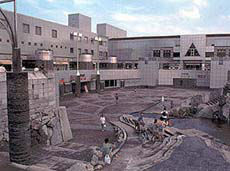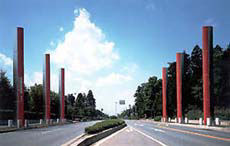LANDSCAPE
LANDSCAPE
The Research and Education District, 18km long, is dispersed in the local rustic scene. Principal roads are laid out crossing each other like a lattice. Well arranged institutional buildings in spacious sites, networks of walkways and parks rich in green, and facility clusters in residential areas and the bustling city center altogether create a new landscape unknown in Japan before, giving comfort and pleasure to the residents and visitors alike. To create landscape suitable for this national endeavor, many regulatory measures have been taken: i.e., establishment of the Standard for Construction Plans to control the landscape and environment of the research and educational institutes and government housing; landscape studies of public facilities such as roads; enactment of the Zoning Code on the Minimum Size of Housing Lots and Building Code for Education District; and control of disorderly advertisements and billboards by designation of zones where an Outdoor Advertisement Code is enforced. Particularly in the City Center Zone, HUD had instituted the City Center Zone Landscape Planning and The Committee for Urban Landscape to promote a good landscape.
SIGNS
Public signs are installed following systematic and coordinates rules befitting the city planning. Drivers are guided by the city gates, the symbol of entrance to the Research and Education District, street plan panels, entrance signs for institutes, signs for public parking, etc. Pedestrians are guided by city guide maps at bus stops, street panels for major facilities.
 |
(1)North
Gate | Dark Red |
Gembu(the color of
one of four guardian gods) |
| (2)East
Gate | Blue | Seiryu(one
of the four gods) |
| (3)Main
Gate | Green | (Color
of nature) |
| (4)Main
Gate | Gray | (Color
of science and technology) |
| (5)South
Gate | Red | Suzaku(one
of the four gods) |
| (6)West Gate | White | Byakko(one
of the four gods) |


